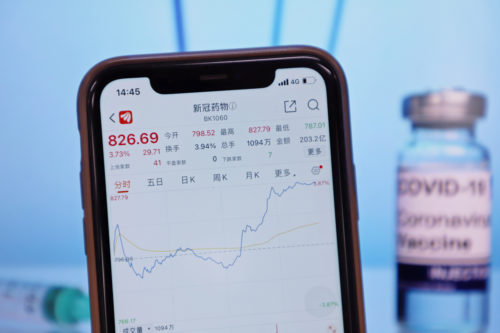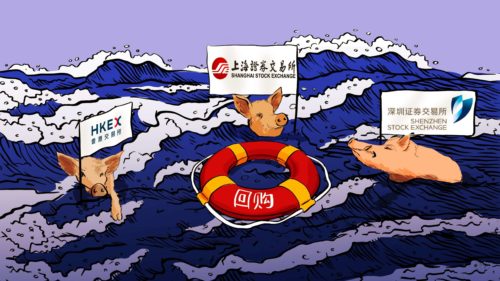Fixed income investments in China — A-Share Intelligence with Gerard DeBenedetto
Chinese stock markets are susceptible to wild oscillations but the associated risks don’t always bring returns, even to the savvy investor. Investing in the fixed income market is one way to help balance the volatility.

High risks are supposed to lead to high rewards, at least if the investors are smart. But in mainland Chinese equities, or A-Shares, that hasn’t always been the case.
A-Shares are too volatile compared to their expected return. The CSI300 (the major mainland market index) has an annual expected return of 8.5% but an associated annual volatility of 30%. In comparison, the S&P500 historically has a 10% return with 15% volatility. Obviously, one prefers higher returns with lower volatility. What can investors do to lower risks or increase returns, if not both, for their China allocation?
The mainland fixed income market is remarkably stable, even for U.S. dollar investors facing two-way RMB fluctuation. Though there aren’t many vehicles that exist for U.S. investors in this asset class, the exchange-traded fund (ETF) CBON has more than $130 million under management and has a turnover of about half a million dollars daily. This ETF holds China government bonds, large state-owned enterprises, and avoids riskier bets like small property developers and technology.
CBON, which has consistent returns and low volatility in underlying bonds, can help offset the high volatility in the CSI300. In other words, CBON can offer better returns for lower risk.
Since 2015, the CSI300 through ASHR averaged a frustratingly low return of 1.37% annually, a bad number for an emerging market economy that averaged more than 6% GDP growth. Meanwhile, its volatility soared to an average of 24.39% annually, meaning that investors experienced a rollercoaster of highs and lows during the holding period. Some investors may have liquidated at a low point, while those that did manage to hold on were not adequately compensated for their discipline.
Instead, if investors simply constructed a portfolio that was 50% ASHR and 50% CBON, then they would have gotten much higher returns at 2.54% annually AND much lower volatility at 14%. Granted, nobody is doing victory laps with annualized returns of 2.54%, but all performance is relative and gauged on a relative basis: 2.54% is significantly better than 1.37% over more than half a decade with the added benefit of significantly lower volatility.
This is not a back-testing exercise or trick, this is simply recognizing that mainland stocks are volatile, and they have been this way for many years. Investing in high volatility stocks without some risk management tool is a recipe for disappointment. Experienced investors may shift their equity allocation as stocks become “cheaper” or more “expensive” on a valuation basis. You can do the same. In the simple example above, the portfolio was rebalanced annually to 50/50.
You can even run your own scenarios at Portfolio Visualizer. The mainland market is evolving with deeper liquidity, broader market participation, better analytics, and greater transparency. All this means is that what worked in the past may not work in the future. Investors of all stripes would surely welcome more consistent overall market behavior.
There are plenty of knowledgeable readers out there that may say the CSI300 via ASHR isn’t the best way to invest on the mainland and that active investing is better than passive allocations. But for investors that are looking to allocate a small share of their assets to China, it is prudent to engage in some risk management to blunt the high volatility of mainland stocks.
A-Share Intelligence is a weekly column.






